 |
 |
| May 2021
|
| Whats The Buzz?
Genetically modified mosquitoes have been released for the first time in the U.S. The first 12-week phase placed blue-and-white boxes containing about 12,000 GM Aedes aegypti male mosquito eggs, developed by a company called Oxitec, in six small areas around the Florida Keys. When water is added to the box, the mosquitoes hatch, mature, and enter the environment. The experiment tests the method for suppressing populations of invasive Ae. aegypti mosquitoes, which can carry diseases such as chikungunya, dengue, yellow fever, and Zika. The genetically modified mosquitoes carry two genes: a fluorescent marker gene, and a self-limiting gene. A fluorescent marker gene glows under a special red light, and allows researchers to identify GM mosquitoes from wild mosquitoes. The self-limiting gene prevents female mosquito offspring from surviving to adulthood. GM male mosquito eggs that carry the self-limiting gene are released into an area, hatched, and develop into the adult stage. The GM males outnumber the wild males, which increases their likelihood of mating. The genes are passed on to the male offspring, and the female offspring die in the early larval stage. As a result, the population of Ae. aegypti in the area decreases. |
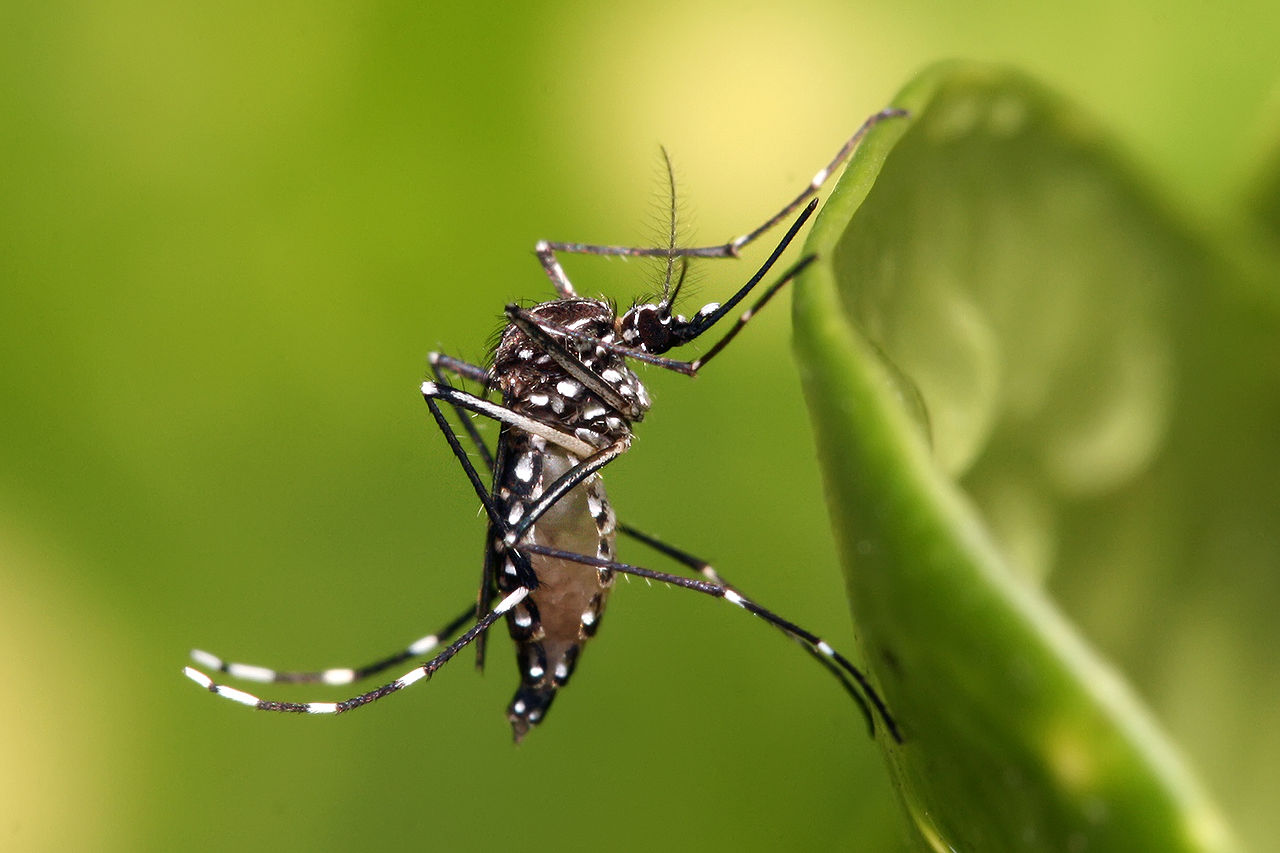
Aedes aegypti. Credit: Muhammad Mahdi Karim CC: GFDL 1.2
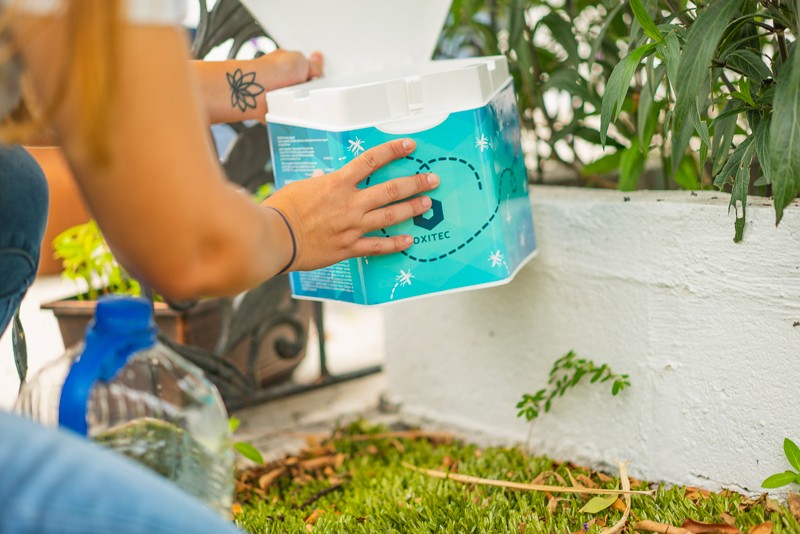
“Oxitec has placed boxes of its mosquito eggs in undisclosed locations in the Florida Keys to protect against vandalism.” Credit: Oxitec 2021
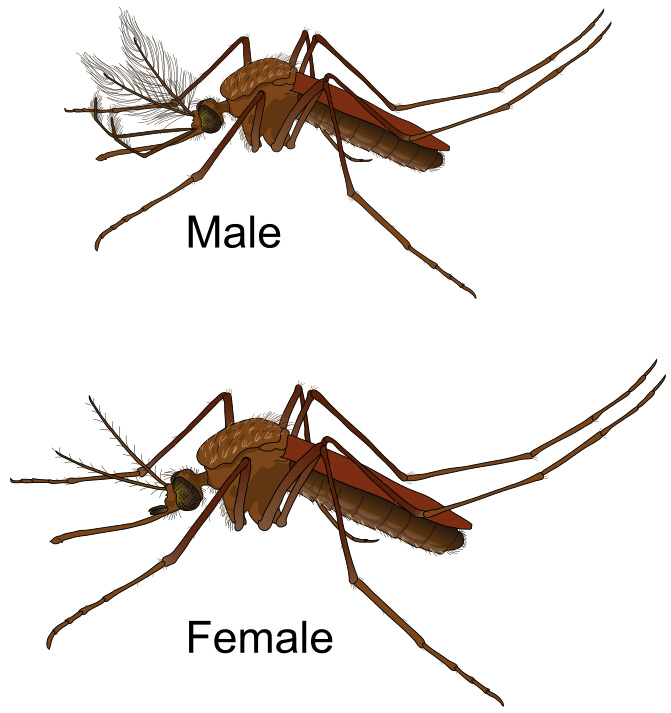
Image indicating difference between male vs. female mosqitoes. Note antennae.
|
|
|
| That’s an Attractive Silhouette
Invasive spotted lanternflies (SLF, Lycorma delicatula) are visually drawn to lone vertical objects, such as utility poles. Researchers were able to observe a large accumulation of several hundred flight- dispersing SLFs on and around a utility pole in the middle of a vineyard. They observed that lanternflies that flew within 10 feet of the utility pole, or an object with a strong vertical silhouette, acted as a strong visual stimulus causing the adult to turn toward it and land. Some even remained on the pole for hours. A large portion of the SLFs that eventually dispersed were inevitably drawn back in by their visual attraction to the pole, effectively trapping them on the pole for long periods of time. Many that landed toward the bottom would work their way to the top. In conjunction with previous studies, the researchers concluded that this behavior is due to the SLF efforts to find new sources of food and/or find a mate by crawling to the top of the highest/nearest vertical surface and launch themselves off of it. This allows the lanternflies to fly further than they could by launching from the ground, as they do not generate much lift, only thrust. Knowing that SLF are drawn to lone vertical objects, such as utility poles, could be valuable in predicting where the invasive lanternflies might be heading, or could be used by field scouts to document populations/presence. |
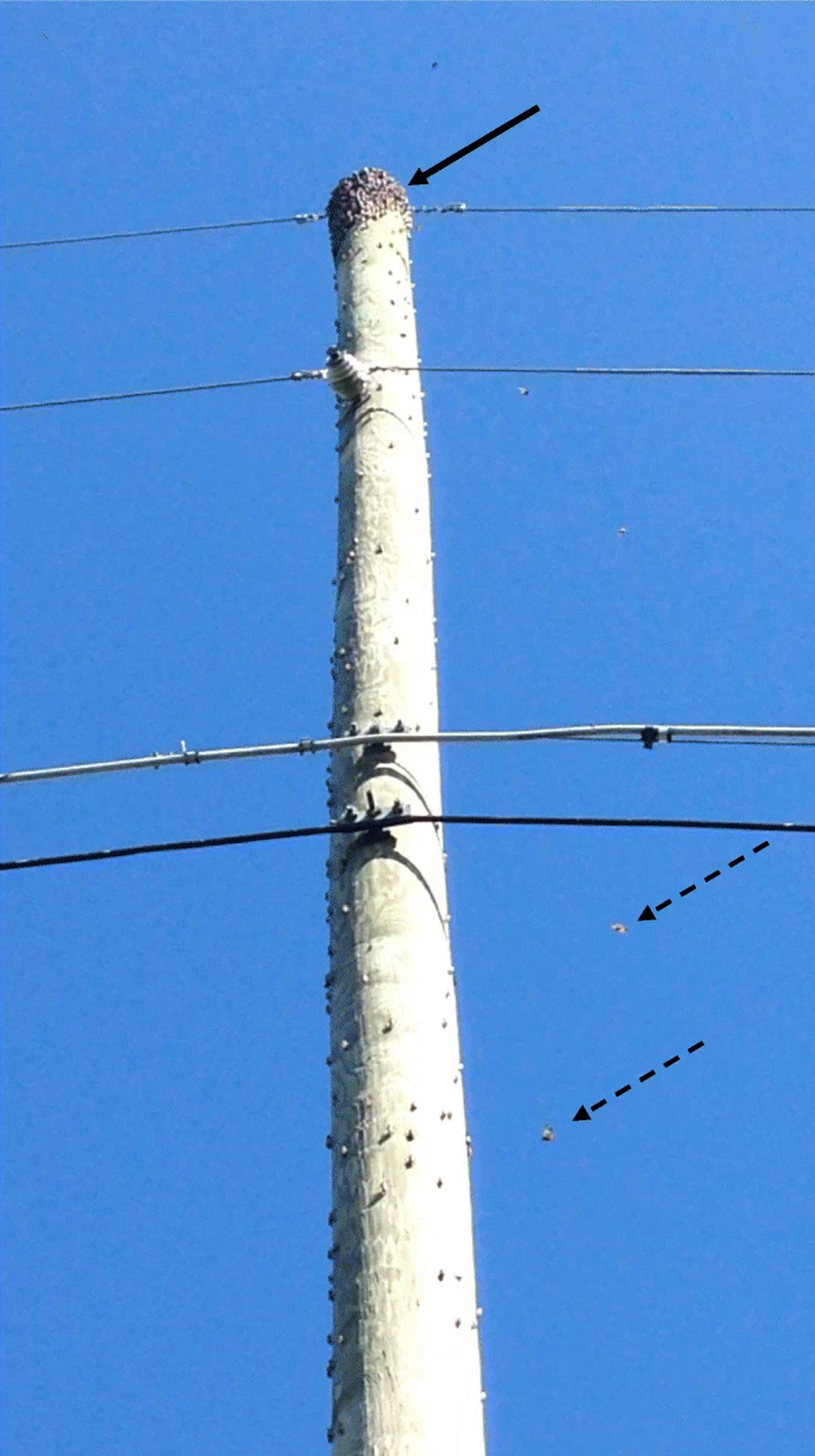
Photo of a telephone pole showing L. delicatula adults walking up toward the top of the pole where they have accumulated (solid arrow) before trying to launch themselves into flight from the pole. Other adults in flight can be seen (dashed arrows) approaching the pole from the environment Credit: Baker et al. 2021.
|
|
|
| Something Has Gone A-Foul
Clavelina oblonga is an invasive, soft-bodies, marine fouling species that reduces diversity in communities it invades, and interferes with community succession (how the community recovers following a natural disaster). Marine fouling species are tunicates or invertebrate filter-feeding organisms, like barnacles or mussels, that settle on hard substrates, like docks, or the hulls of ships. Marine fouling environments are different from terrestrial ecosystems because different species of larvae are present at different times of the year, so what the ecosystem looks like after a disturbance is dictated by when it occurs. Given the recent introduction and spread of C. oblonga along the North Carolina coast in 2015, researchers wanted to see how this invasive species would affect succession in a fouling environment. During an experiment, researchers submerged terra cotta plates every four weeks for over a year and observed the marine communities that settled on them. Over the course of the study, many different fouling species settled on the plates, but in each case when C. oblonga settles, they rapidly crowded out the other species. The study period even included an unusually cold winter and a hurricane, both of which cleared C. oblonga from the plates, only to have them regrow, outcompeting all other fouling communities. It seems that C. oblonga has no real natural predators. |
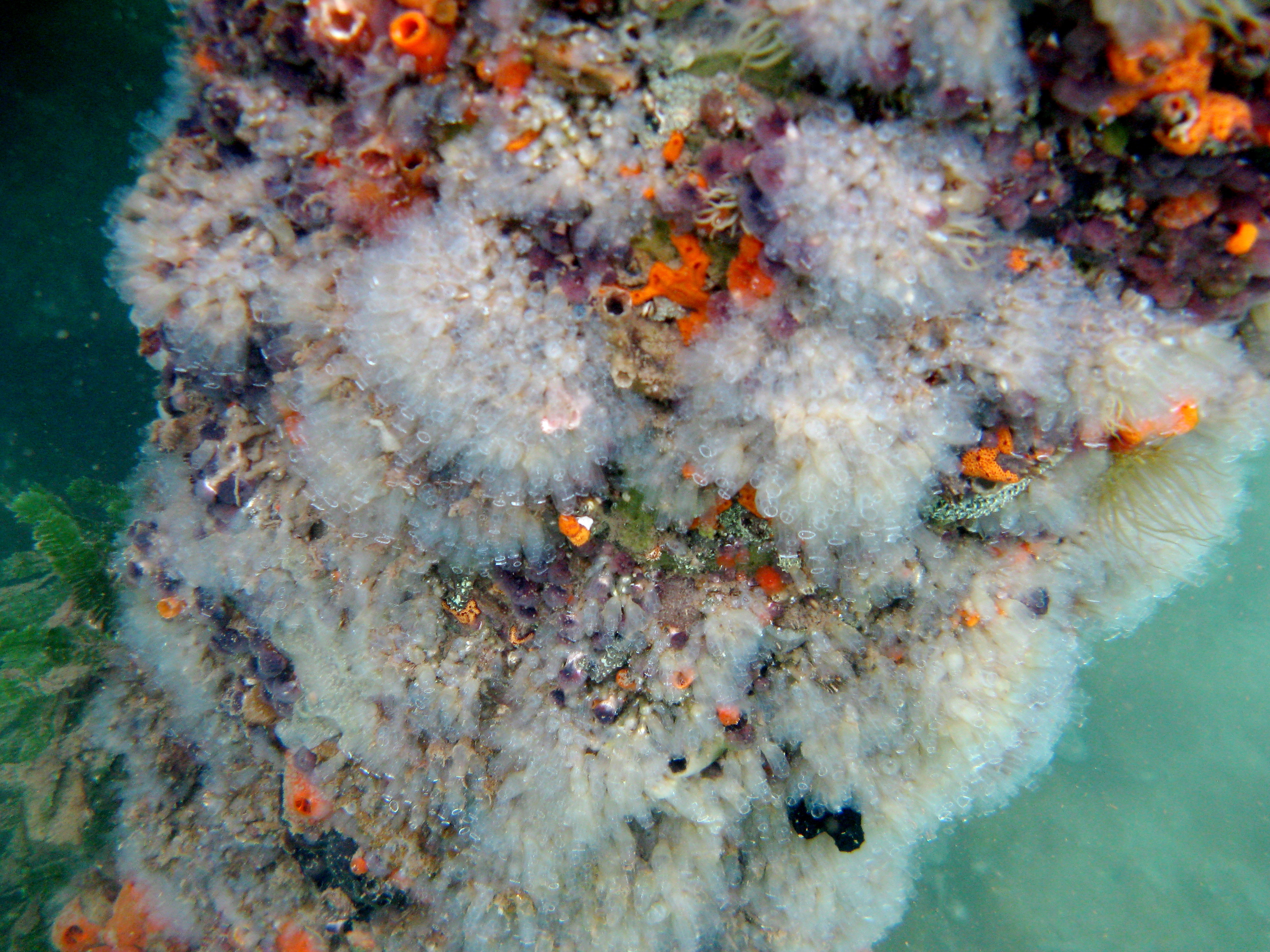
Communities of Clavelina oblonga growing on a structure, Bocas Del Toro Research Station Marina, Panama. CC0 1.0

Clavelina oblonga, Bocas Del Toro Research Station Marina, Panama. CC0 1.0
|
|
|
| Are You Eating My Crops? 1 of 12
The silver Y moth (Autographa gamma) is a migratory species, but in areas where it is unable to overwinter severe infestations are known to occur, making it a potential crop pest, and the first in our new 12 month series called ‘Are you eating my crops?’. Individual pests chosen for this series have not yet been reported in Texas, but are on the ‘Watch List’ due to their high level of pest importance. During this series we will cover several different crop pests, what to look for, what they look like, and where you can find more information about them. If you ever have question or concerns regarding the headliner of this section, feel free to email invasives@shsu.edu |
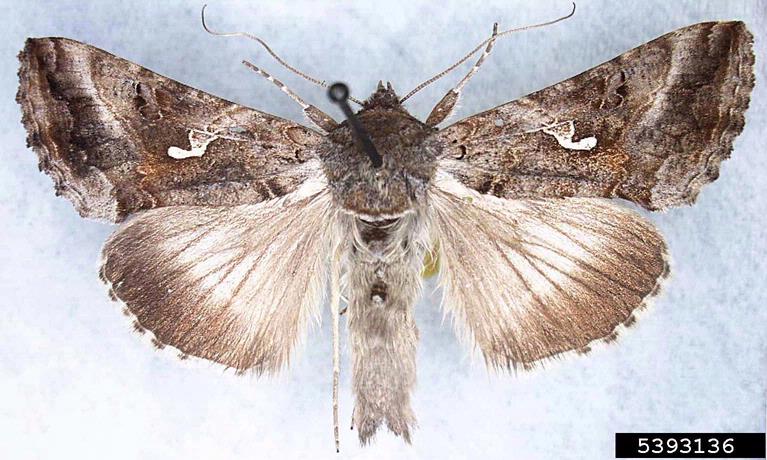
Adult Silver Y moth (Autographa gamma). Note characteristic "y" on forwings. Credit: Julieta Brambila, USDA APHIS PPQ
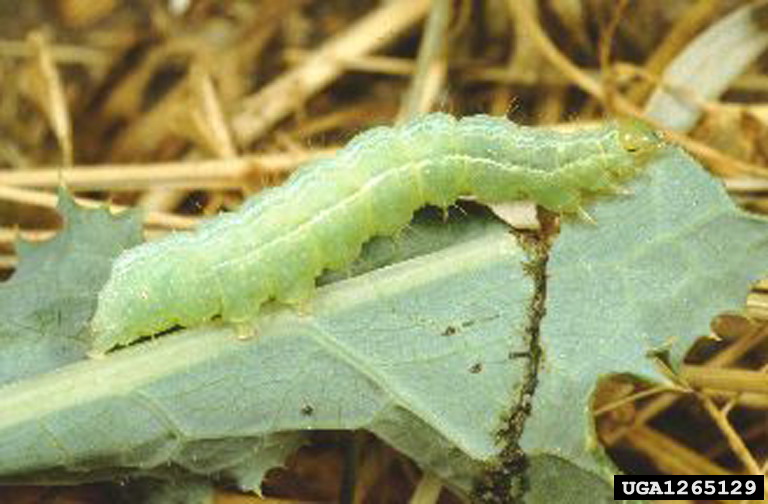
Silver Y moth larva. Note the white spiracular line edged in green that runs laterally down the body of the caterpillar. Credit: Paolo Mazzei
|
|
|
|
Play Clean Go Awareness Week The PlayCleanGo® Stop Invasive Species in Your Tracks® campaign works tirelessly to stop the detrimental impact of invasive species to North America’s lands and waters. Through partnerships with other environmental and recreational organizations, clear messaging, and community-based social outreach, awareness is being raised as to how and why thousands of invasive species are spread every year. To stop the spread, PlayCleanGo provides easy, actionable information to help individuals enjoy our beautiful natural resources responsibly. |
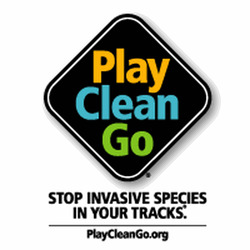 |
|
|
| Become a certified invasive species detector
Come participate in the Aquatic Invasive Species (AIS) Detectors Program course that is open for registration and fully online. The AIS Detectors certification is an introduction to aquatic invasive species science, identification, and surveillance. Participants learn how to report invasive species to government officials, best practices for preventing the spread of AIS, relevant rules and regulations, and how to search for AIS on their own. The AIS Detectors Program at the University of Minnesota is jointly supported by the Minnesota Aquatic Invasive Species Research Center and University of Minnesota Extension. Scholarship opportunities are available. |
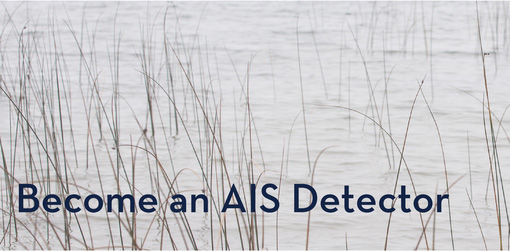 |
|
|
| North American Invasive Species Management Association Training Webinars
The program is designed to provide the education needed for professionals and students who are managing or learning to manage invasive species. The courses include the most current invasive species identification, control and management techniques, and how to comply with local and federal regulations. |
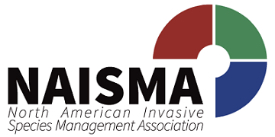 |
|
|
| USGS' Comprehensive List of Non-Native Species Established in Three Major Regions of the U.S.
A comprehensive list of non-native species established in three major regions of the United States: Version 3.0. A compilation and analysis of authoritative assertions of the nonindigenous established status of taxa in Alaska, Hawaii, and the contiguous United States of America. |
 |
|
|
|
Invasive Spotlight: |
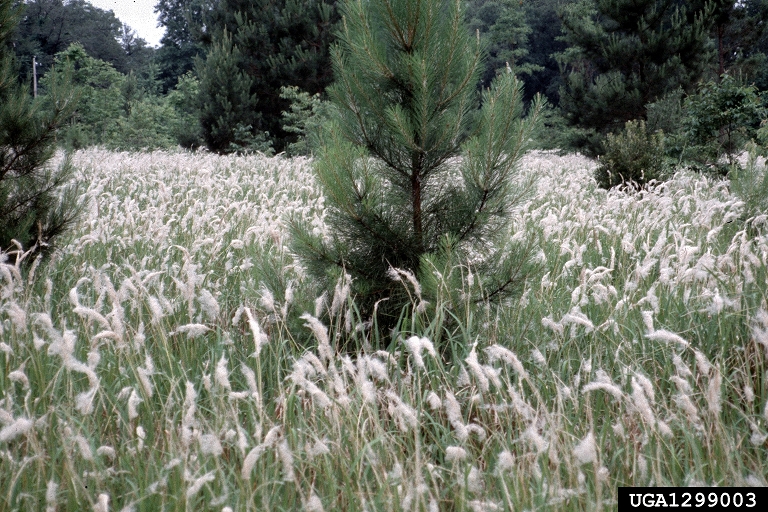
Field of Cogongrass. Credit: Charles T. Bryson, USDA Agricultural Research Services
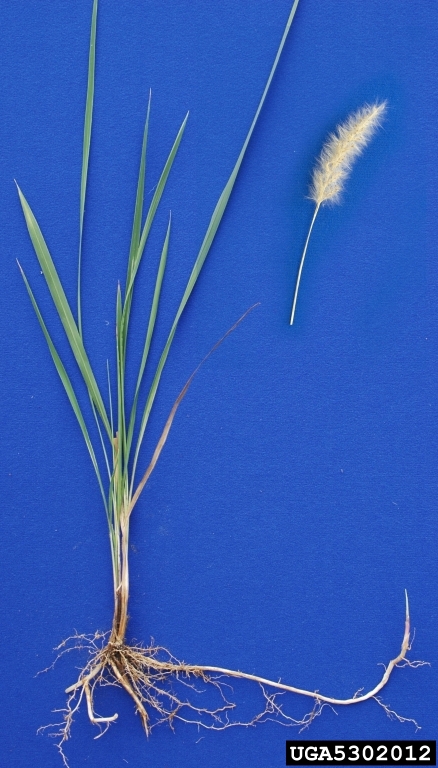
Structures of Cogongrass. Note (from top to bottow): leaves with prominent white midrib, flower and seedhead, overlapping leaf sheaths, stem, and sharp-tipped rhizomes. Credit: Chris Evans, University of Illinois
|
|
|
|
New: Opportunities To Get Involved |
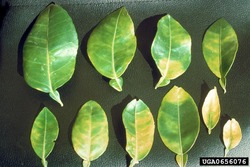
Leaf mottle on grapefruit, a characteristic symptom caused by citrus greening bacterium but also seen on trees infected by Spiroplasma citri. Credit: J.M. Bove.
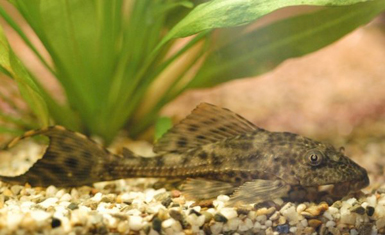
Armored catfish (Hypostomus plecostomus). Credit: United States Geological Survey.
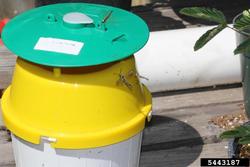
Example of a bucket trap. Credit: Whitney Cranshaw. Colorado State.
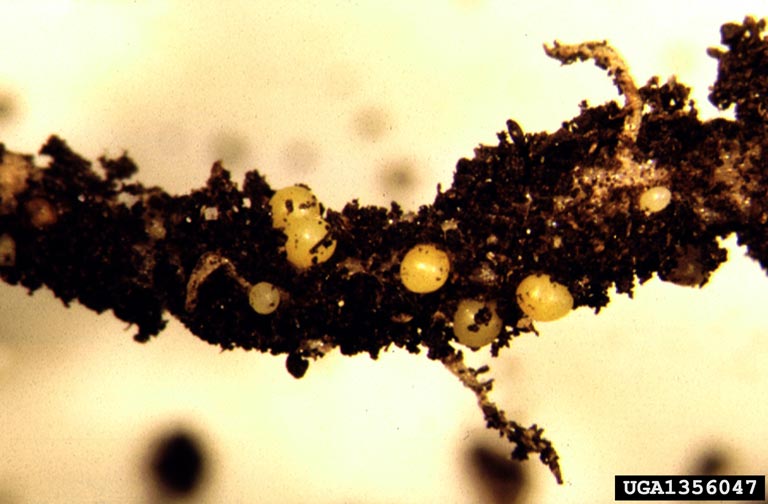
Example of Potato cyst nematode. Credit: Christopher Hogger
|
|
|
| More News
Quantifying the Level of Pollution in Marinas Complete Genome of The Raccoon Dog Revealed: The Fungus Attacking Australian Native Plants DEEP Warns About New Invasive Species of Crab in Local Riverbanks 'Alien' Plants Could Pose Risk to Fruit Bats Florida Introduces ‘Tag Your Reptile Day’! The Ants, Bees, and Wasps of Canada, Alaska, and Greenland: A Checklist of 9250 Species Bubble Curtain at Lake Tahoe's Elk Point Protects Against Aquatic Weeds |
|
|
|
If you would like to highlight a successful invasive species project or nominate a special person to be highlighted in an upcoming iWire, please send the details to iwire@texasinvasives.org. |
|
|
|
Sentinel Pest Network and Invaders of Texas Workshops
Invaders of Texas workshops train volunteers to detect and report invasive species as citizen scientists. Workshops, which are free, are designed to introduce participants to invasive species and the problems they cause, cover aspects of invasive species management, and teach identification of local invasive plants, and to train participants to report invasive plants using the TX Invaders mobile application. The workshop is 7 hours long (usually on a Saturday, but scheduling is arranged with each individual host group). The workshop satisfies Master Naturalist training requirements. Upcoming Workshops:
Saturday, June 5, 2021 (9:00am-11:00am) For more information or to register to attend a free workshop, please visit the Workshop Page. |
 |
 |